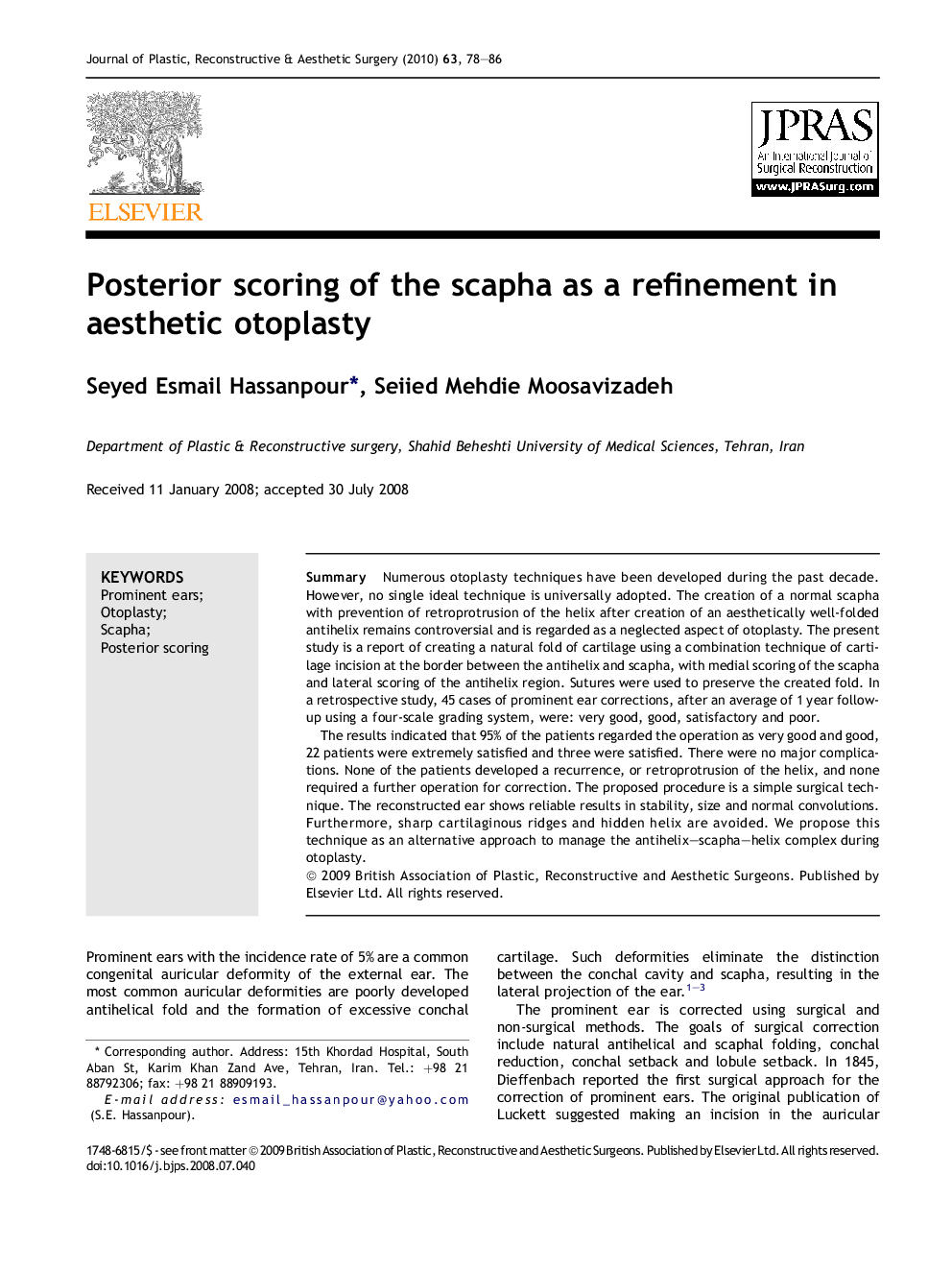| Article ID | Journal | Published Year | Pages | File Type |
|---|---|---|---|---|
| 4121309 | Journal of Plastic, Reconstructive & Aesthetic Surgery | 2010 | 9 Pages |
SummaryNumerous otoplasty techniques have been developed during the past decade. However, no single ideal technique is universally adopted. The creation of a normal scapha with prevention of retroprotrusion of the helix after creation of an aesthetically well-folded antihelix remains controversial and is regarded as a neglected aspect of otoplasty. The present study is a report of creating a natural fold of cartilage using a combination technique of cartilage incision at the border between the antihelix and scapha, with medial scoring of the scapha and lateral scoring of the antihelix region. Sutures were used to preserve the created fold. In a retrospective study, 45 cases of prominent ear corrections, after an average of 1 year follow-up using a four-scale grading system, were: very good, good, satisfactory and poor.The results indicated that 95% of the patients regarded the operation as very good and good, 22 patients were extremely satisfied and three were satisfied. There were no major complications. None of the patients developed a recurrence, or retroprotrusion of the helix, and none required a further operation for correction. The proposed procedure is a simple surgical technique. The reconstructed ear shows reliable results in stability, size and normal convolutions. Furthermore, sharp cartilaginous ridges and hidden helix are avoided. We propose this technique as an alternative approach to manage the antihelix–scapha–helix complex during otoplasty.
